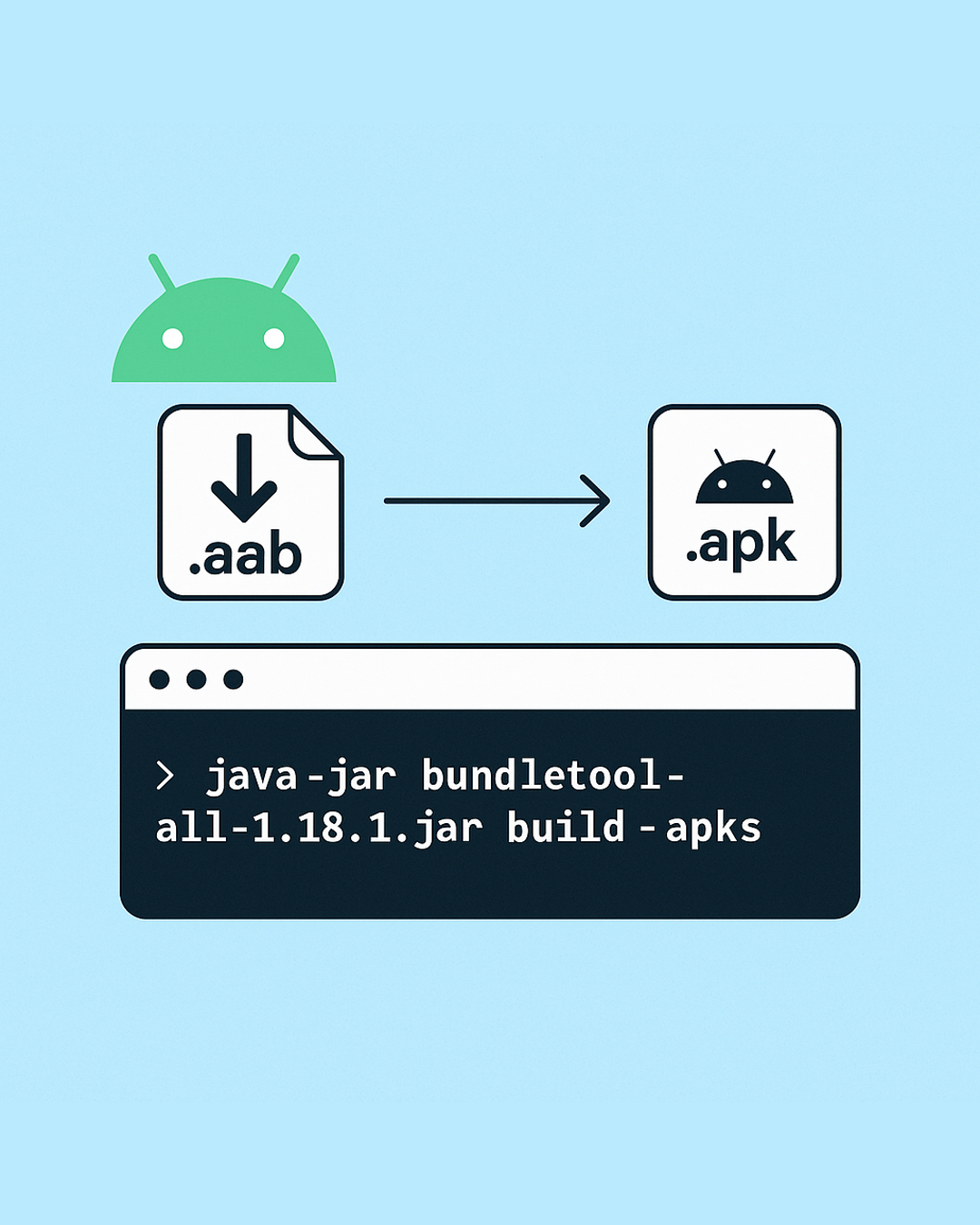
From AAB to APK
Before submitting your Android game to Google Play—whether for internal testing or public release—you might want to install and test your build locally. Google Play requires you to upload an .aab file, so that’s what your game engine (Unity, Godot, etc.) will generate by default. But what if you need to test it locally before uploading?
Here’s a quick method to convert an AAB to a universal APK using Google’s Bundletool, allowing you to test your game on a real device without publishing it first.
Step 1: Download Bundletool
Download the official Bundletool .jar file from:
👉 https://developer.android.com/tools/bundletool
Place the file in a folder where you want to run the conversion.
Step 2: Generate Universal APK
Open a command prompt (CMD) in the folder where bundletool-all-x.x.x.jar is located and run the following command (replace paths and passwords accordingly):
java -jar bundletool-all-x.x.x.jar build-apks \
--bundle=/path/your/aab/your_app.aab \
--output=/path/your/aab/your_app.apks \
-ks=/path/your/keystore/your_ks.keystore \
-ks-pass=pass:<KS_PSW> \
-ks-key-alias=your_alias \
-key-pass=pass:<SIGNING_KEY_PSW> \ # If this password is identical to the one for the keystore itself, you can omit this flag.
--mode=universal
This command creates a universal APK that includes all required architectures and resources in one file.
Step 3: Extract the APK
Once generated, rename the app.apks file to app.zip and extract its contents.
Inside, you’ll find universal.apk. This is the file you can install on your Android device using:
%ADB_PATH%\adb kill-server
%ADB_PATH%\adb start-server
%ADB_PATH%\adb devices -l
%ADB_PATH%\adb install -r universal.apk
Why Use This Method?
✔ Pros
- Detect issues before submission to Google Play
- Ideal for fast local testing
- No need for Play Console or test tracks
⚠ Cons
- Universal APKs can be larger in size if your AAB includes multiple architectures (armv7, arm64, x86, etc.)
Conclusion
Converting AAB to APK locally using Bundletool is a practical and fast method to validate your build. It’s especially helpful in early testing phases, internal QA, or last-minute checks before release.